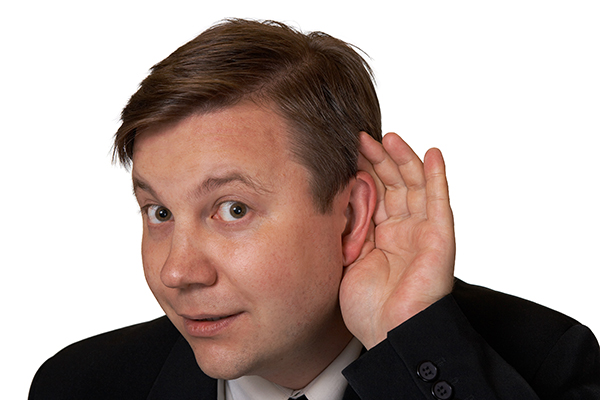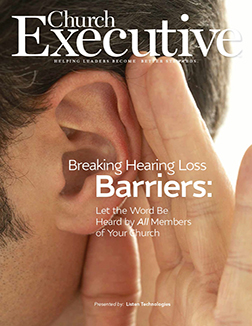
By Maile Keone
 Congregants attend their houses of worship for many different reasons. Some find inspiration from the messages and music they hear, and others enjoy connecting with the community. Whatever the reason, if they can’t hear the messages that inspire them — or if they lose the feeling of connection they get with fellow congregants because they can’t participate in conversations — they might stop attending.
Congregants attend their houses of worship for many different reasons. Some find inspiration from the messages and music they hear, and others enjoy connecting with the community. Whatever the reason, if they can’t hear the messages that inspire them — or if they lose the feeling of connection they get with fellow congregants because they can’t participate in conversations — they might stop attending.
Unfortunately, for congregants who have hearing loss, this happens more frequently than it should.
An estimated 20 percent of American adults have a measurable degree of hearing loss — and that number rises dramatically when calculated on a worldwide scale. To make this number more tangible, the next time you attend a worship service, look around your congregation and count one out of every five members. This is potentially how many people could stop attending, or could be missing out on the full message, due to the inability to hear clearly.
 You might be thinking, People who have hearing loss wear hearing aids. You might also think that hearing aids should solve any listening issues — but, this is a large misconception.
You might be thinking, People who have hearing loss wear hearing aids. You might also think that hearing aids should solve any listening issues — but, this is a large misconception.
While hearing aids solve some of the issues related to hearing loss, they don’t solve everything. Hearing aids are designed to work the best within three to six feet. They also amplify all sound. To give a more applicable example, if someone with a hearing aid is sitting farther than six feet from the pulpit, and surrounded by a lot of background noise (like an HVAC system, a crying child or shuffling papers) he or she will have a very difficult time hearing the speaker, because the background noises will also be amplified.
Fortunately, there are additional technologies that exist that provide people with hearing loss with great listening experiences in houses of worship, as well as other public venues. These assistive listening technologies work with or without hearing aids.
There are three types of assistive listening technologies available: radio frequency (RF), infrared (IR), and hearing loop.
Each type of assistive listening technology comes with its own unique benefits. When installing an assistive listening system in your house of worship, it is important to consider which type of system will work best in the space.
For example, if there are line-of-sight issues — such as columns or other visual barriers — it might be best to install an RF system.
If simultaneous broadcasts and a secure audio signal are required, so that the sound does not travel from room to room, an IR system should be considered.
Finally, a hearing loop should be considered if there are many congregants with telecoil-equipped hearing aids who attend worship services each week. It might also be wise to consider a hearing loop if your house of worship is undergoing construction of some kind, as it can be installed within the physical structure of the building.

Along with providing better listening experiences for those with hearing loss, an assistive listening system can be used for other things in your house of worship. Portable RF assistive listening systems can be used for tour groups and sunrise services. These systems are also very useful if there members in your congregation who speak different languages; they can provide different listening channels for language interpretation.
It’s important to provide the best possible experience for congregants in your house of worship — and that includes giving them the opportunity to hear the messages and music that inspire them each week, as well as connecting with their church community.
No matter what type of technology you choose, providing an assistive listening system in your house of worship can help ensure your congregants keep listening to inspiration.
Maile Keone is the Vice President of Sales and Marketing at Listen Technologies
[ www.listentech.com ] in Bluffdale, UT. She is an advocate for people with hearing loss and a spokesperson on mandatory assistive listening compliance worldwide.


